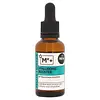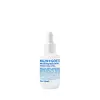What's inside
What's inside
 Key Ingredients
Key Ingredients

 Benefits
Benefits

 Concerns
Concerns

 Ingredients Side-by-side
Ingredients Side-by-side

Water
Skin ConditioningGlycerin
HumectantBetaine
HumectantPentylene Glycol
Skin ConditioningHypnea Musciformis Extract
Skin ProtectingSaccharide Isomerate
HumectantSargassum Filipendula Extract
Skin ProtectingBiosaccharide Gum-1
HumectantPanthenol
Skin ConditioningSorbitol
HumectantPhenoxyethanol
PreservativeSodium Hyaluronate
HumectantPPG-26-Buteth-26
Skin ConditioningPEG-40 Hydrogenated Castor Oil
EmulsifyingChamomilla Recutita Flower Extract
MaskingGlyceryl Acrylate/Acrylic Acid Copolymer
HumectantCaprylyl Glycol
EmollientChlorphenesin
AntimicrobialDisodium EDTA
Gelidiella Acerosa Extract
Skin ProtectingSodium PCA
HumectantCitrus Aurantium Amara Peel Oil
Skin ConditioningSodium Lactate
BufferingArginine
MaskingPelargonium Graveolens Flower Oil
MaskingAspartic Acid
MaskingSaccharomyces Lysate Extract
HumectantPCA
HumectantSodium Citrate
BufferingLavandula Angustifolia Oil
MaskingSodium Hydroxide
BufferingGlycine
BufferingAlanine
MaskingAnthemis Nobilis Flower Oil
MaskingSerine
MaskingValine
MaskingIsoleucine
Skin ConditioningProline
Skin ConditioningThreonine
Histidine
HumectantPhenylalanine
MaskingSodium Carboxymethyl Betaglucan
Benzyl Benzoate
AntimicrobialBenzyl Salicylate
PerfumingCitronellol
PerfumingFarnesol
PerfumingGeraniol
PerfumingLimonene
PerfumingLinalool
PerfumingWater, Glycerin, Betaine, Pentylene Glycol, Hypnea Musciformis Extract, Saccharide Isomerate, Sargassum Filipendula Extract, Biosaccharide Gum-1, Panthenol, Sorbitol, Phenoxyethanol, Sodium Hyaluronate, PPG-26-Buteth-26, PEG-40 Hydrogenated Castor Oil, Chamomilla Recutita Flower Extract, Glyceryl Acrylate/Acrylic Acid Copolymer, Caprylyl Glycol, Chlorphenesin, Disodium EDTA, Gelidiella Acerosa Extract, Sodium PCA, Citrus Aurantium Amara Peel Oil, Sodium Lactate, Arginine, Pelargonium Graveolens Flower Oil, Aspartic Acid, Saccharomyces Lysate Extract, PCA, Sodium Citrate, Lavandula Angustifolia Oil, Sodium Hydroxide, Glycine, Alanine, Anthemis Nobilis Flower Oil, Serine, Valine, Isoleucine, Proline, Threonine, Histidine, Phenylalanine, Sodium Carboxymethyl Betaglucan, Benzyl Benzoate, Benzyl Salicylate, Citronellol, Farnesol, Geraniol, Limonene, Linalool
Ingredients Explained
These ingredients are found in both products.
Ingredients higher up in an ingredient list are typically present in a larger amount.
Caprylyl Glycol is a humectant and emollient, meaning it attracts and preserves moisture.
It is a common ingredient in many products, especially those designed to hydrate skin. The primary benefits are retaining moisture, skin softening, and promoting a healthy skin barrier.
Though Caprylyl Glycol is an alcohol derived from fatty acids, it is not the kind that can dry out skin.
This ingredient is also used as a preservative to extend the life of products. It has slight antimicrobial properties.
Learn more about Caprylyl GlycolPanthenol is a common ingredient that helps hydrate and soothe the skin. It is found naturally in our skin and hair.
There are two forms of panthenol: D and L.
D-panthenol is also known as dexpanthenol. Most cosmetics use dexpanthenol or a mixture of D and L-panthenol.
Panthenol is famous due to its ability to go deeper into the skin's layers. Using this ingredient has numerous pros (and no cons):
Like hyaluronic acid, panthenol is a humectant. Humectants are able to bind and hold large amounts of water to keep skin hydrated.
This ingredient works well for wound healing. It works by increasing tissue in the wound and helps close open wounds.
Once oxidized, panthenol converts to pantothenic acid. Panthothenic acid is found in all living cells.
This ingredient is also referred to as pro-vitamin B5.
Learn more about PanthenolPeg-40 Hydrogenated Castor Oil is derived from castor oil and polyethylene glycol (PEG). It is used as a emollient and emulsifier.
As an emulsifier, it helps prevent ingredients from separating. It also helps make the other ingredients more soluble; it is often used to solubilize fragrances. This increases spreadability and elongates shelf life in a product.
Emollients help soothe and soften the skin. They do this by creating a protective film on your skin. This barrier helps trap moisture and keeps your skin hydrated. Emollients may be effective at treating dry or itchy skin.
This ingredient may or may not be vegan, depending on the source.
Peg-40 Hydrogenated Castor Oil may not be fungal-acne safe. We recommend speaking with a professional if you have any questions or concerns.
Learn more about PEG-40 Hydrogenated Castor OilPentylene glycol is typically used within a product to thicken it. It also adds a smooth, soft, and moisturizing feel to the product. It is naturally found in plants such as sugar beets.
The hydrophilic trait of Pentylene Glycol makes it a humectant. As a humectant, Pentylene Glycol helps draw moisture from the air to your skin. This can help keep your skin hydrated.
This property also makes Pentylene Glycol a great texture enhancer. It can also help thicken or stabilize a product.
Pentylene Glycol also acts as a mild preservative and helps to keep a product microbe-free.
Some people may experience mild eye and skin irritation from Pentylene Glycol. We always recommend speaking with a professional about using this ingredient in your routine.
Pentylene Glycol has a low molecular weight and is part of the 1,2-glycol family.
Learn more about Pentylene GlycolPhenoxyethanol is a preservative that has germicide, antimicrobial, and aromatic properties. Studies show that phenoxyethanol can prevent microbial growth. By itself, it has a scent that is similar to that of a rose.
It's often used in formulations along with Caprylyl Glycol to preserve the shelf life of products.
We don't have a description for PPG-26-Buteth-26 yet.
Sodium Hyaluronate is hyaluronic acid's salt form. It is commonly derived from the sodium salt of hyaluronic acid.
Like hyaluronic acid, it is great at holding water and acts as a humectant. This makes it a great skin hydrating ingredient.
Sodium Hyaluronate is naturally occurring in our bodies and is mostly found in eye fluid and joints.
These are some other common types of Hyaluronic Acid:
Learn more about Sodium HyaluronateSodium Hydroxide is also known as lye or caustic soda. It is used to adjust the pH of products; many ingredients require a specific pH to be effective.
In small amounts, sodium hydroxide is considered safe to use. However, large amounts may cause chemical burns due to its high alkaline.
Your skin has a natural pH and acid mantle. This acid mantle helps prevent harmful bacteria from breaking through. The acid mantle also helps keep your skin hydrated.
"Alkaline" refers to a high pH level. A low pH level would be considered acidic.
Learn more about Sodium HydroxideWater. It's the most common cosmetic ingredient of all. You'll usually see it at the top of ingredient lists, meaning that it makes up the largest part of the product.
So why is it so popular? Water most often acts as a solvent - this means that it helps dissolve other ingredients into the formulation.
You'll also recognize water as that liquid we all need to stay alive. If you see this, drink a glass of water. Stay hydrated!
Learn more about Water